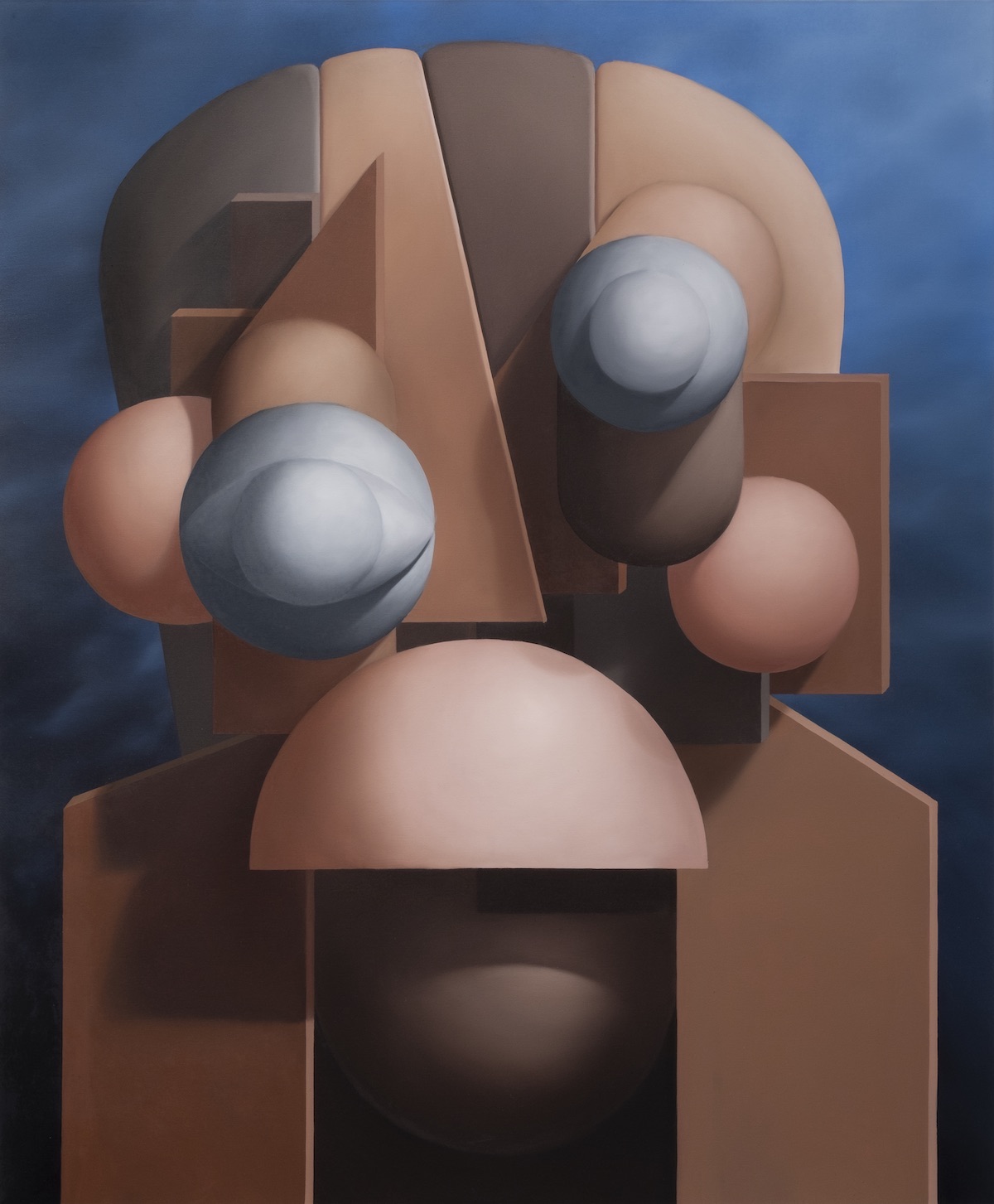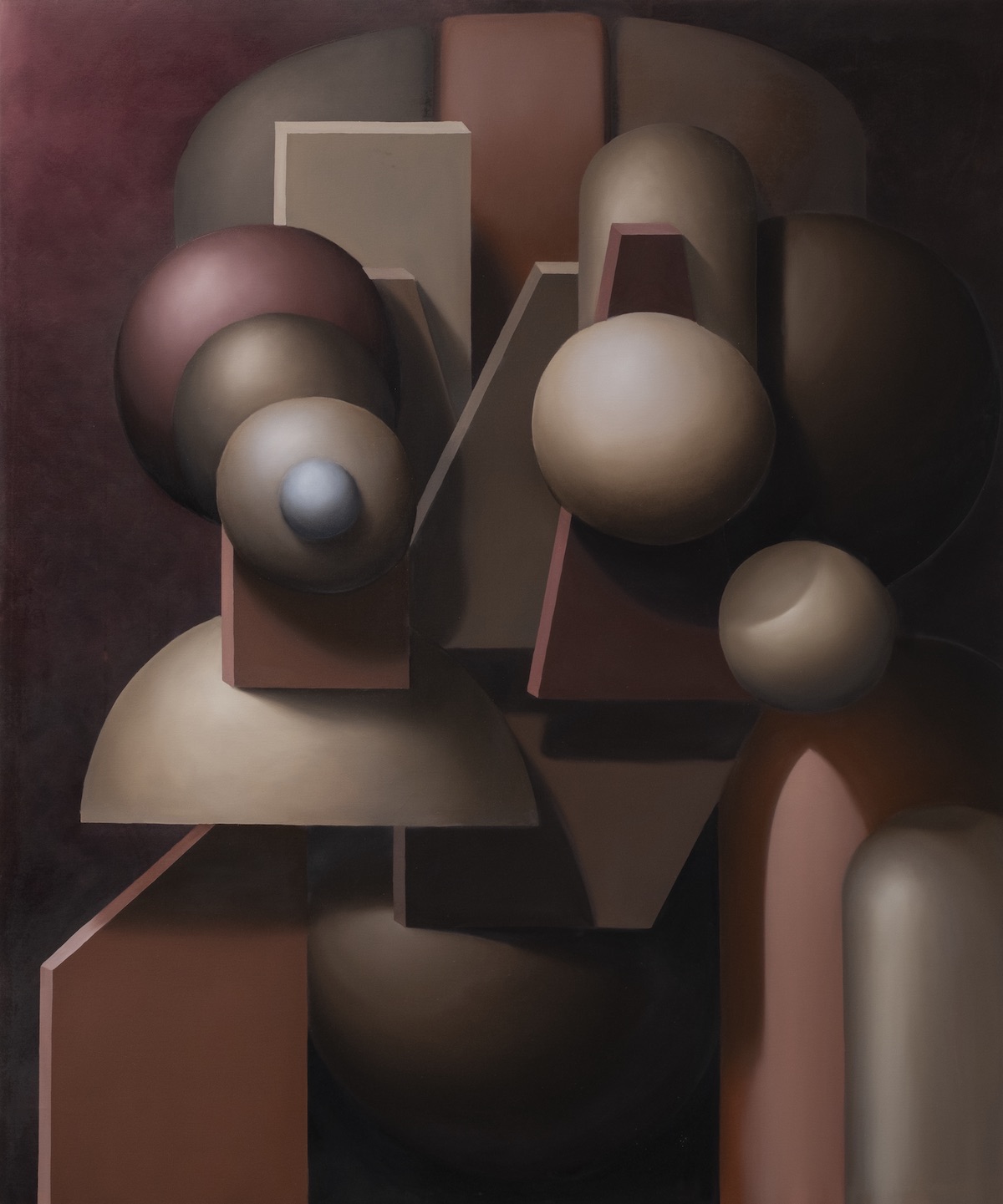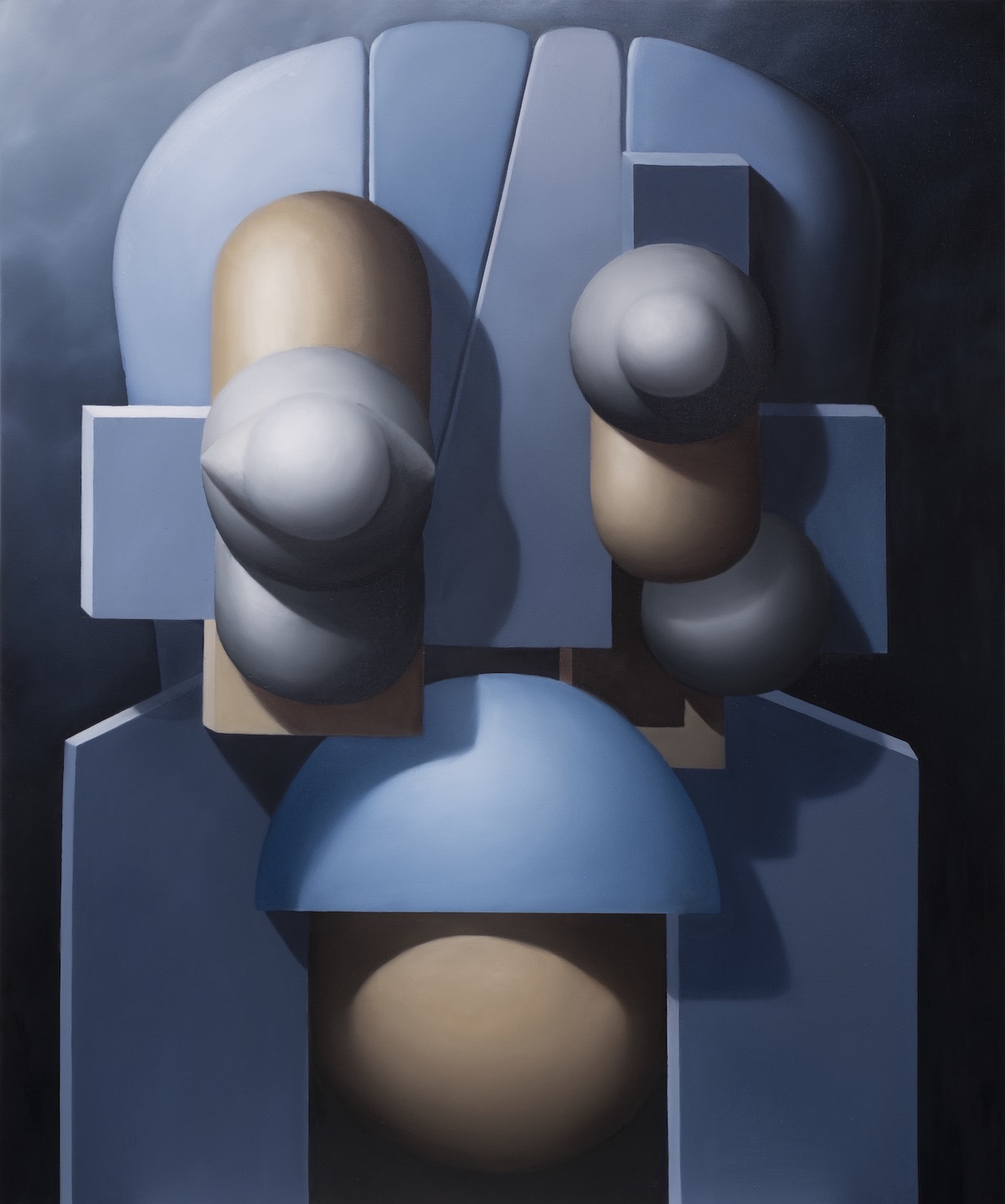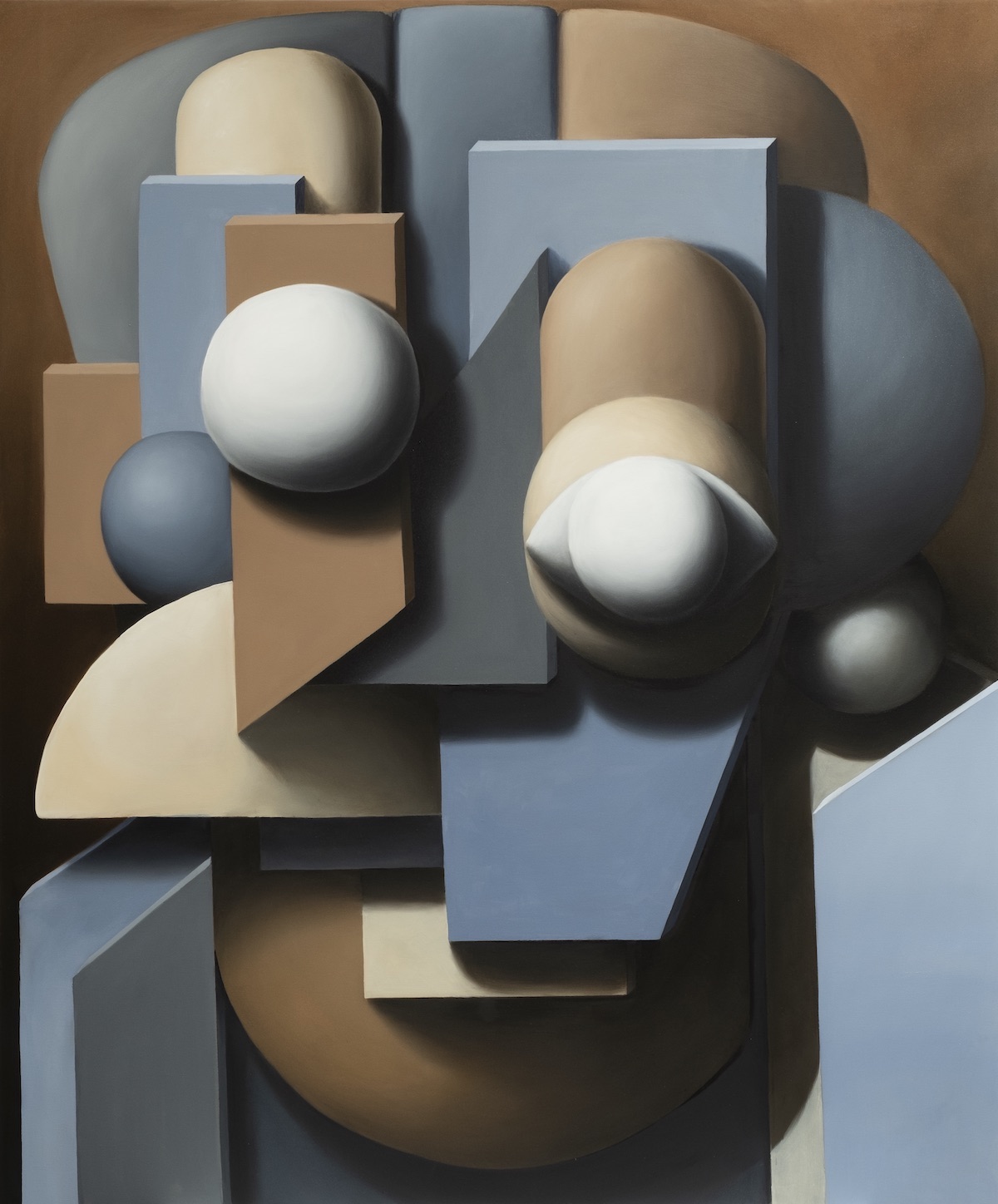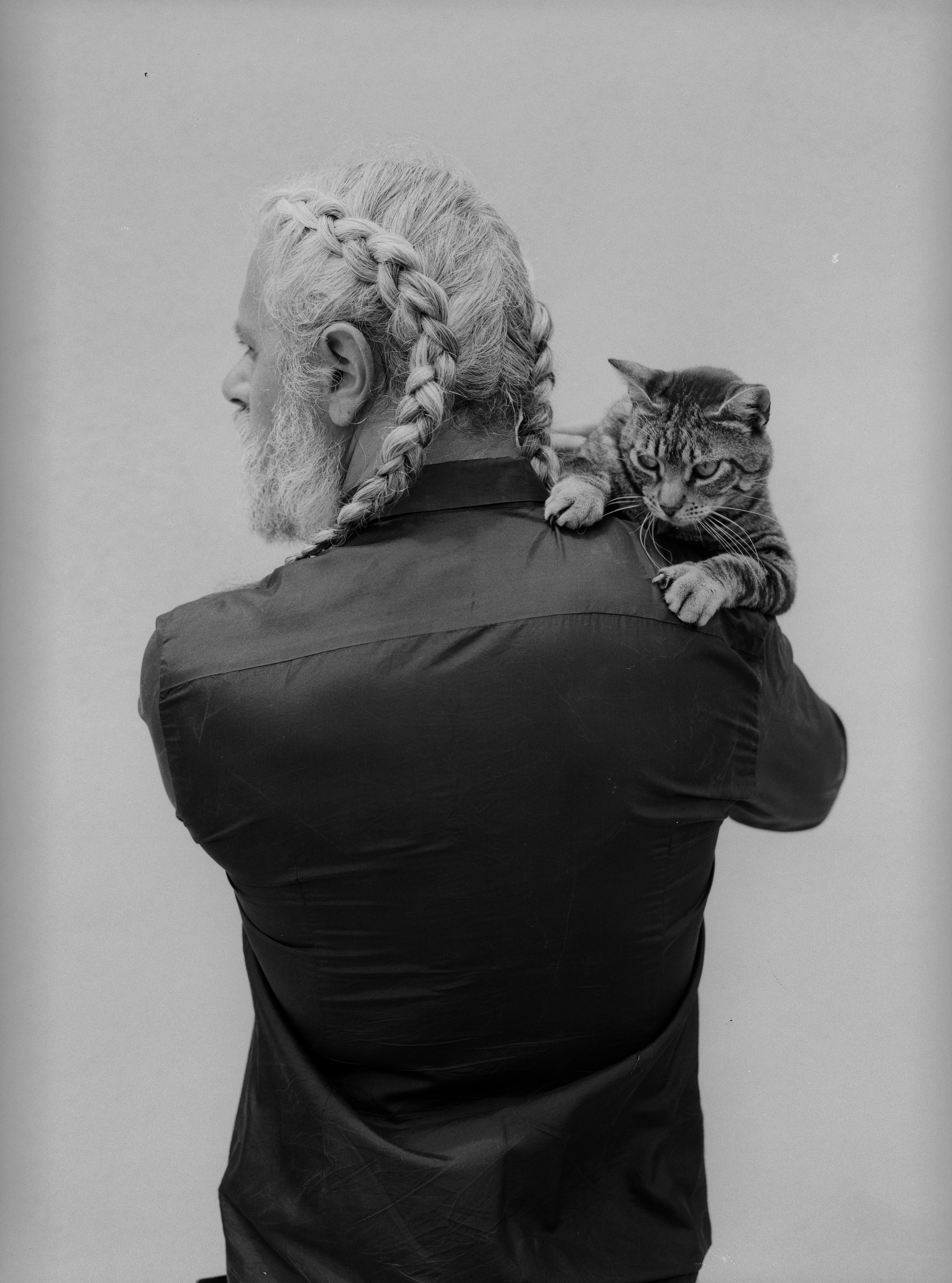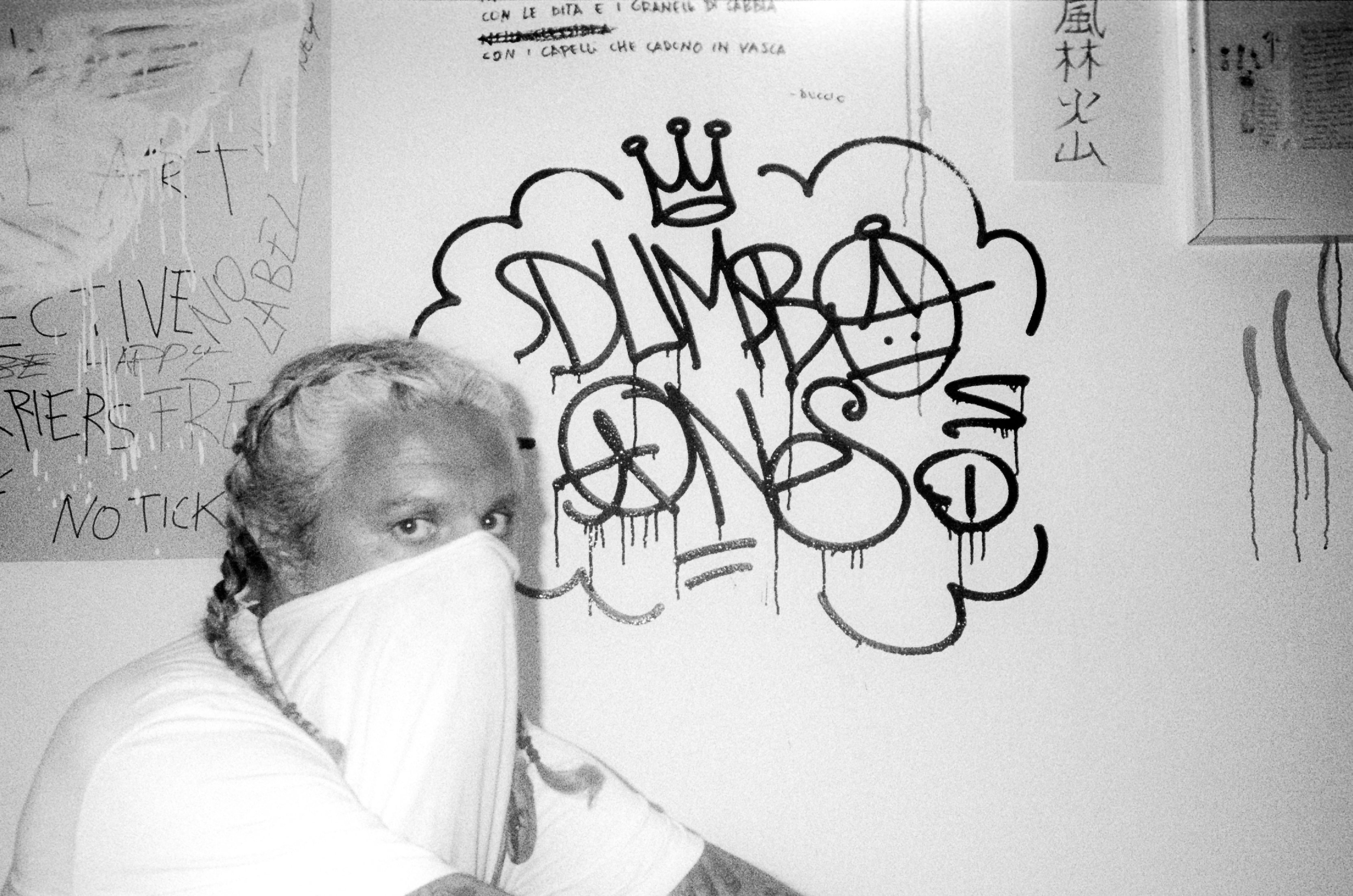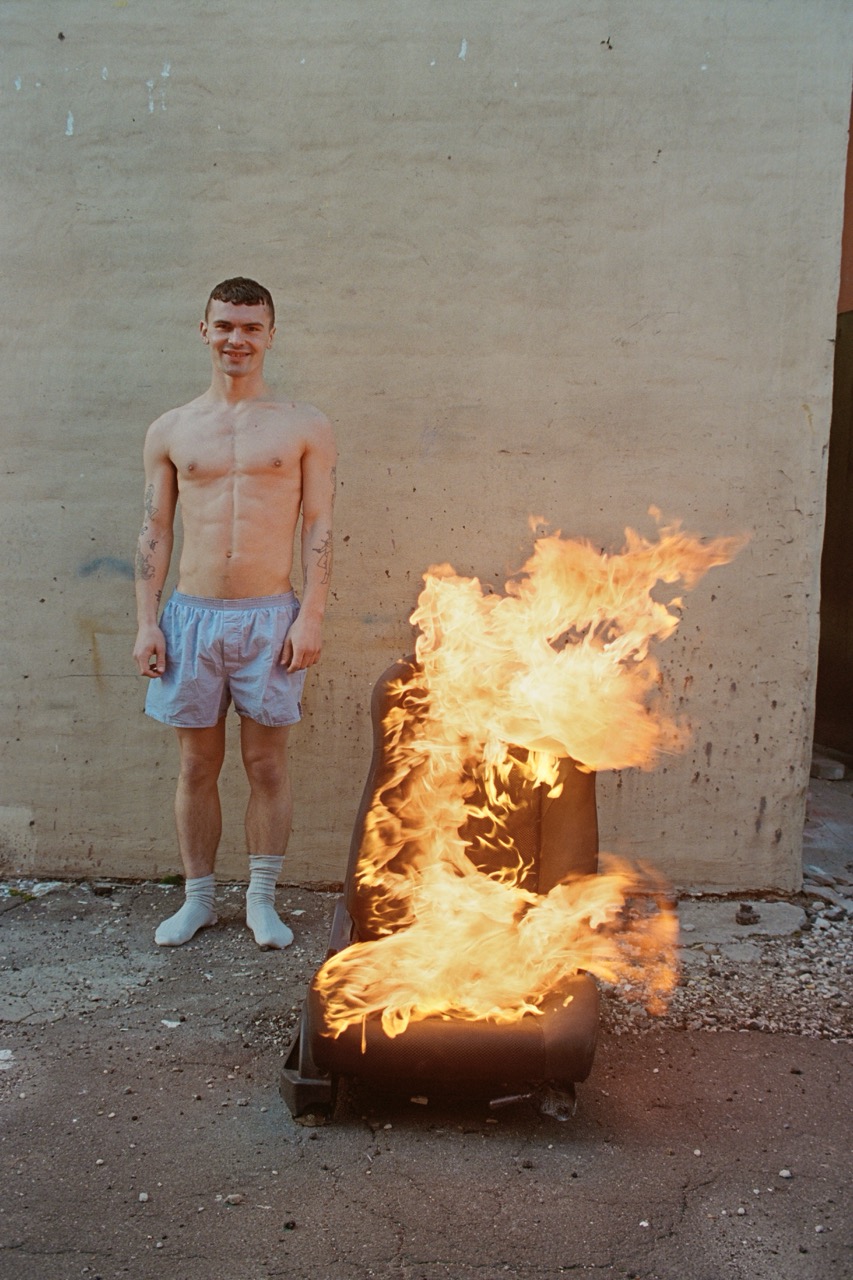Devon DeJardin Presents: Giants
In previous works, DeJardin’s Guardians were solitary figures, in dialogue only with the viewer. In Giants, DeJardin introduces a new dynamic between the Guardians, placing them in conversation with each other to elicit themes of introspection, growth, and resilience. DeJardin’s latest body of work not only explores narrative complexity, but also expands his artistic vocabulary. Ranging from intimate portraits to monumental tableaux, the exhibition culminates with a monumental bronze sculpture — the first that the artist has created at this scale. The evolution of his sculptural practice is reflected in his treatment of the paint on canvas. These new works feature an unparalleled depth of forms, rendered with a precision that at times belies the presence of an artist’s hand.
office sat down with the artist to discuss his upbringing as an artist, upcoming show, future projects, and more.
What does the universe of Devon DeJardin look like right now? Could you paint a picture for me?
I'd say the past year has been focused on getting ready for this solo exhibition in New York. It was about a year and a half of work to develop these 10 paintings and two sculptures and it's been kind of all over-consuming. There was this kind of excitement, working towards this exhibition that I wanted to focus on, I wanted to put something out there that was gonna make a statement. So I kind of hunkered down for the past year and a half and kept a very rigid work schedule, Monday through Friday, about 10 hours of painting a day. I went through about 20 to 25 different works to come up with these final pieces. I wish I could say that my life has been this fun, super exciting traveling journey for the past year, but it's been focused on trying to make this show something that I'm proud of personally, but then also something that captivates the audience that comes in and sees it.
You’re a self-taught multimedia artist, which is incredible seeing as your work is quite remarkable. Could you recall your earliest memory of when you were propelled into the world of art? What made it stick with you?
I remember visiting my grandma, she’s a watercolorist, she never did much other than small group shows selling works for no more than a couple of hundred dollars. Though growing up as a kid, I remember going to spend time with her in Marblehead, Massachusetts. She had this unique print studio in the basement of her house, where she did all sorts of collage styles, works with watercolor, and mixed materials that she would find on the beach. It was just really kind of like opening the wardrobe and going into this different world down there.
I remember I was at the MFA in Boston, I went there when I was about 10 years old with my grandma. We were walking around and I remember seeing some gruesome, horrific paintings of these early medieval times like horses, pulling the limbs off of people. I was like whoa, I'm feeling something from this and it's grotesque and it's dark and it's not something that I wanna have my work portray. However, it was captivating to me because it showed me that through simple marks on a paper and simple gestures with paint you can evoke so much emotion through a canvas. So when I started to self-teach myself over the past couple of years, that idea of really trying to pour in energy and focus to create a piece of work that can emulate that feeling that I had as a child, I think is always on the forefront of my mind.


What is it about the work of artists such as Picasso, Duchamp, and Krasner that fuels your inspiration? Talk to me about some of the references that bleed into your designs.
I think it's very hard to kind of shy away from the fact that Picasso, the father of cubism and just an overall character sort to say. That has a strong influence on my work just because so much of my current body of work involves geometric forms to create these portrait-style images. With this show, a lot of my physical influences came from other artists, writers, and poets, there was a heavy lean on Goya and his color palettes and his understanding of light. Then diving into the title of the show called giants, coming from a book that Malcolm Gladwell wrote about these metaphorical giants that we face in everyday life. It also discusses the power of understanding that oftentimes as individuals we are viewed as the lesser to these giants, but in reality, we have such an advantage if we choose to lean in and dive into these symbols in our lives.
The overarching concept of your work seems to focus on the concept of guardians, what exactly does this mean to you and why is this important for you to explore as an artist?
Guardians to me, um, is based on the idea of non-theological protection and this kind of being that is placed in a household or this figure that's supposed to guide and help and serve and protect. I went to school to study world theology and get a better understanding of the major worldviews and perspectives that were out there. I feel like so much of people's studies when it comes to religion are what separates us. You believe something, I believe something. Now we're gonna put a wall between us because I think I'm right and you think you're right. But in reality, if we can step back and look at the common threads that tie us all together, we all need some sort of angel or protector that's there to help us get to this next step in life. These battles can be turmoil, pain, suffering, and loss, but at the same time, these guardians can be there to help celebrate these successes and these moments of joy in our life. So in short guardians, to me, are these non-theological symbols of protection that are meant to hold our hand as we walk through this journey of life.


First and foremost, congratulations on landing your first solo gallery show in New York! What themes did you try to highlight throughout? What kinds of dialogue do you hope to spark from those who visit?
So in all of my shows, this is a little bit more hidden for myself that I like to seed in there and hope that people will discover. There are four pieces in the show and I don't want to specifically name them, but they tell a four-chapter story about the idea of facing whatever it is in your life that you consider a giant. I'll say that the first painting starts with the title: ‘Things aren't always as big as they seem.’ It's an ode to the story of David and Goliath. So you have a giant figure on one side and you have a little figure on the other and they're facing each other where you can't tell if they're about to enter battle or if they're gonna have a stare-off or if they're gonna turn and go opposite ways. You'll see throughout the rest of the show, there are four pieces that you kind of see this figure getting bigger and they start to look equal to each other and then eventually they start moving towards each other and through each other. For me, it's that story of the moment we choose to face symbolic things in our lives that we know that we need to push through, but as we face them, we start to realize we were at an equal advantage and we can push through them into this metaphorical light.
Of the four chapters, how did you conceptualize your vision? How did you decide that you were gonna split it up into these four chapters? What is it about geometrical shapes that help you convey your stories?
Using geometrical shapes is part of a further vision of mine, one in which I also want to have a creative process. I think design elements when it comes to architectural sculpture, all different kinds of forms that are around us, they're made up primarily of shapes. So taking certain shapes from different things, such as buildings and houses and bridges or whatever it may be, and then using them to create paintings, I just think that allows much further exploration of the arts when you can base it off of things like these simple structures. Part of me all the time wants to just break out into these hyper-realistic paintings of people in landscapes. I'm sure at some point I'll explore it, but for right now it's just solidifying this base that I can build from in the future. You're gonna see two sculptural pieces that I've been working on, but it's this idea of taking these shapes from the canvas, seeing that they're almost coming off through the paintings, and then actually placing them into physical spaces.


How did you decide on the references that you were gonna use in your upcoming show?
For me, it started with one of the portraits and I was like, wow, I just kind of found out that I can push this to such a three-dimensional level. It was also during the time that the NFTs and the metaverse and all this digital stuff were booming. I thought it’d be cool to tap into this exploration that this world is having in this hyper-digital age. I thought to myself, what if we take these paintings that are kind of two-dimensional, flat, dark, and eerie and push them into this feeling that they could live in this future space. When I came to that idea, I was like, how do I tie something that's future and present, but then link it and anchor it in something that's from the past? That's where that Malcolm Gladwell's book came in because he references something that's from thousands of years ago, but he describes it in a present sense. Now you're looking at the work that could also look in a future tense. So it's trying to play on those three pillars.
The sculptures that you’ll be showcasing seem to be emblematic of your work, what did the process of melding this together look like? What ties into the rest of your pieces?
The sculptural process is something that I'm still learning, I'm being mentored and taught. I'm working alongside people that are far better than I am at sculpting and it’s a process that takes many hands. The process goes from taking an original sketch, making it into a painting and then I bring it into a 3D format on the computer and envisioning what these paintings would look like from all angles. For me, that's the tricky part because all of my paintings and portraits are kind of forward-facing. Then to take a side angle on the back angle and create balance within that, that's the most time-consuming part of it.
Once we have those 3D files, it's sent over to the foundry and we start to work on the wax molds and the printouts, and then slowly life starts coming together with the bronze and the welding and melding. I've always wanted my work to be able to be seen in all different kinds of settings and landscapes. Painting is limited to primarily being able to be indoors but I think there's so much power in this idea of what a guardian is. It should be able to be placed in all different areas. I just want to be able to have my work seen in all different types of environments. I think there's something really interesting about archeologists digging up these artifacts from the past. We find dinosaurs and these religious symbols and we try to put narratives to them. So I thought it would be cool to create what I thought were these guardian paintings that I've been working on.


Lastly, what can we expect to see from you in the upcoming months? Is there anything in particular that you’re looking forward to?
I'm doing a couple of pieces at the armory show in September, which has always been something that I've wanted to be involved with. I think it's a good experience and a good program. As far as the work, I'm gonna be further developing sculpture elements of my process. Then I'm trying to start conceptualizing and building this world around these portraits and these characters. It's kind of like you have the chapters, you have the characters, and now it's time to build that narrative around the characters to tell us a complete story, especially with this guardian body of work, which has been an extended body of work for multiple years now. I see it coming to life in so many different forms and I'm slowly unveiling these chapters that when people look back at it in a couple of years, you're gonna see all these different ways that they become connected as one. I find myself learning more every single day, but I've always kind of given myself credit for being a good storyteller. So I'm trying to bring this idea of storytelling into painting and people towards a much larger narrative. In the end, it's kind of a little mystery.




